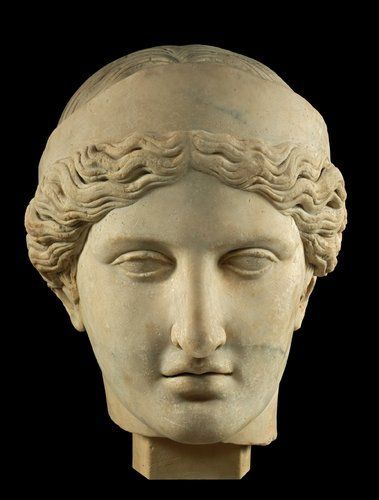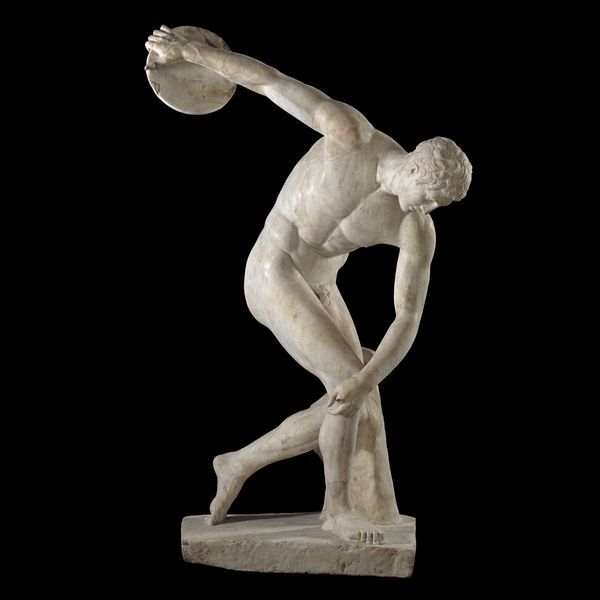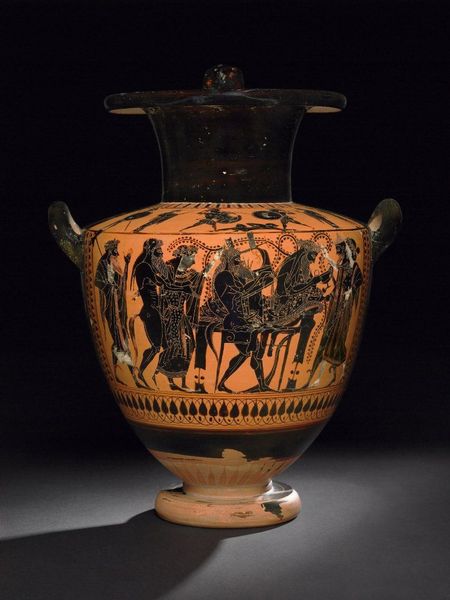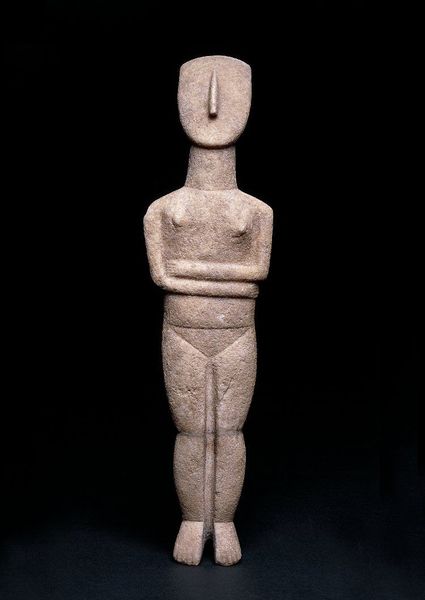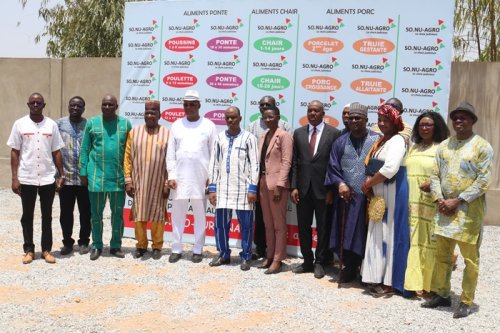![1]()
Tra…, 2008. Bronze and gold leaves. Two parts : 58-69 x 220 cm (24-28 ¾ x 86 ½ in) et 58-69 x 160 cm (24-28 ¾ x 63 in). Installation view « Giuseppe Penone, Le Corps d’un jardin », Galerie Marian Goodman, Paris. Courtesy de l’artiste et de la Galerie Marian Goodman, Paris / New York.
PARIS. La galerie Marian Goodman a le très grand plaisir de présenter une exposition de Giuseppe Penone à partir du 25 mai, quelques semaines avant l’inauguration d’une exposition exceptionnelle de plus d’une vingtaine de ses sculptures monumentales au Château de Versailles.
Notre exposition Le Corps d’un jardin regroupe des œuvres réalisées depuis 1984. Laurent Busine, directeur du Musée des Arts contemporains au Grand Hornu, en assure le commissariat et a retenu trois axes de présentation : mariage, étreinte et cortège.
Pour Laurent Busine, « Les formes sont multiples et variées, qui nous conduisent à sortir de nous-mêmes, à projeter dans l’espace des faisceaux invisibles (des vues, des traces, des odeurs), à rencontrer des formes et des propos, qui se heurtent aux formes et aux propos tenus par le sculpteur qui les a construits et installés ; et c’est sur eux que l’esprit émerveillé se pose.» 1
Comme toujours dans le travail de l’artiste, il est question du geste et de l’empreinte, d’ombre et de lumière, de la surface et du regard.
Giuseppe Penone raconte qu’il a commencéà privilégier la sculpture en négatif alors qu’il était encore étudiant à l’Académie des beaux-arts de Turin. En observant un jour un professeur modelant un buste, il n’a été sensible qu’aux empreintes des mains dans l’argile. Penone attache également une très grande importance à la connaissance des matériaux organiques, qu’il a développée au fil des années au contact de la nature. La sélection d’œuvres de l’exposition rend compte de toutes ses recherches et de la poésie de sa pratique.
Dans la première salle, Albero e gesto (1985-1991) et Gesto Vegetale (1984) allient deux gestes, le geste végétal à celui du sculpteur. Gesto Vegetale associe une posture du corps humain figé en bronze à un élément vivant (un ficus) en constante mutation. «Mais l’arbre, quand il se déplace dans l’espace change de forme. Il conserve la mémoire du geste qu’il fait. On peut dire qu’il y a une similitude entre le geste du sculpteur et ce geste végétal, figé dans la matière. C’est ce qui explique le titre que j’ai donnéà ces œuvres.» 2 En extérieur avec des arbres en terre ou en intérieur avec des arbustes en pot, la série des Gesti Vegetaliévoque aussi le mythe ovidien de la métamorphose de Daphné, ou la transformation de l’humain en végétal.
![1]()
Giuseppe Penone, Gesto Vegetale, 1984 & lbero e gesto, 1985-1991. Installation view « Giuseppe Penone, Le Corps d’un jardin », Galerie Marian Goodman, Paris. Courtesy de l’artiste et de la Galerie Marian Goodman, Paris / New York.
![1]()
Giuseppe Penone, Albero e gesto, 1985-1991. Courtesy de l’artiste et de la Galerie Marian Goodman, Paris / New York.
Dans la grande salle du rez-de-chaussée deux grandes sculptures constituées de plusieurs parties complémentaires produisent des effets de clair-obscur.Tra…(2008) représente un tronc d’arbre non équarri et brisé en deux parties porté par des branches, évoquant un cortège funèbre. La dorure à la feuille éclaire la zone de rupture du tronc et recolle visuellement les morceaux. A l’image de l’Arbre des voyelles du Jardin des Tuileries, Penone a ici détourné la verticalité et vitalité de l’arbre par l’utilisation du bronze, comme pour le fossiliser. Réalisée avec la technique du moulage à la cire perdue, la sculpture en bronze, suite à son oxydation, a pris la couleur même du végétal.
![1]()
Giuseppe Penone, Tra…, 2008. Bronze and gold leaves. Two parts : 58-69 x 220 cm (24-28 ¾ x 86 ½ in) et 58-69 x 160 cm (24-28 ¾ x 63 in). Courtesy de l’artiste et de la Galerie Marian Goodman, Paris / New York.
![1]()
![1]()
![1]()
![1]()
![1]()
![1]()
Giuseppe Penone, Tra…, 2008 (details). Courtesy de l’artiste et de la Galerie Marian Goodman, Paris / New York.
A partir des lignes d’une empreinte digitale, des sillons en terre-cuite forment un cône découpé en trois parties, soutenues par des branchages en bronze. Ombra di terra (2000) est une tentative de matérialiser l’ombre portée d’une empreinte.
![1]()
Giuseppe Penone, Ombra di terra, 2000. Courtesy de l’artiste et de la Galerie Marian Goodman, Paris / New York.
![1]()
![1]()
Giuseppe Penone, Ombra di terra, 2000 (details). Courtesy de l’artiste et de la Galerie Marian Goodman, Paris / New York.
Au sous-sol de la galerie, Spine d’acacia-palmo (2004) est un exemple parfait des œuvres que Penone a réalisées avec des épines d’acacia, avec lesquelles il dessine des détails agrandis de différentes parties du corps (ici la paume d’une main). Les épines qui évoquent la douleur ou la blessure suscitent une légère tension.
«Les épines ont constitué un travail autonome, que j’ai relié aux recherches sur l’empreinte. J’ai en effet dessiné une empreinte avec les épines, signifiant que les points de contact de la peau, les endroits où l’empreinte se dépose, sont les terminaisons nerveuses de la peau. Le dessin de l’empreinte était réalisé sur une toile recouverte de soie, dont la transparence me permettait de coller les épines en suivant précisément le dessin. La soie étant une matière animale, l’œuvre joue donc sur trois éléments: l’animal, le végétal et le minéral.»3
![1]()
Giuseppe Penone, Spine d’acacia-palmo, 2004. Courtesy de l’artiste et de la Galerie Marian Goodman, Paris / New York.
Pour la série Peaux de feuilles, Penone est parti du principe que la structure de la peau était semblable à la surface d’une feuille. Pelle di Foglie-2° volto-mano(2007) construite à partir de branchages en bronze, n’est autre que la projection d’un visage et d’une main sous forme de feuillage.
L’exposition inclut également un corpus d’œuvres sur papier. 16 pagine (2008) sont des compositions d’empreintes végétales et cutanées obtenues à l’aide de pigments de différentes couleurs fixés sur du ruban adhésif.
![1]()
Giuseppe Penone, 16 pagine, 2008. Courtesy de l’artiste et de la Galerie Marian Goodman, Paris / New York.
Né en 1947 à Garessio dans le Piémont, Giuseppe Penone a été considéré comme l’une des figures de l’Arte povera par Germano Celant en 1969. Depuis sa première exposition personnelle en 1968, son travail a fait l’objet de nombreuses expositions monographiques dans de nombreux pays et récemment au Toyota Municipal Museum of Art à Toyota au Japon (2009) ou au Musée d’Art Moderne de Bologne en Italie (2008). En France, la dernière rétrospective majeure de son travail au Centre Pompidou date de 2004. Il a représenté l’Italie à la 52e Biennale de Venise et a participéà la dernière Documenta à Cassel. Actuellement se tiennent deux expositions, à la Whitechapel Gallery de Londres et au Kunstmuseum de Winterthur jusqu’au 11 août 2013.
Pour son rendez-vous annuel avec la création contemporaine, le Château de Versailles a invité Giuseppe Penone. Ses sculptures monumentales dialogueront avec le célèbre jardin conçu par André Le Nôtre, l’année du 400e anniversaire de la naissance de ce dernier. Le commissariat de cette exposition, qui se tiendra du 11 juin au 30 octobre, a été confiéà Alfred Pacquement.
Giuseppe Penone vit et travaille à Turin.
1 Laurent Busine, Le Corps d’un jardin, Galerie Marian Goodman, Paris, 2013.
2 Giuseppe Penone dans “Entretien (15-01-03 – 11-06-03)” p. 276, in Catherine Grenier, Giuseppe Penone, Centre Pompidou, Paris, 2004.
3 Ibid., p. 286.
![1]()
Tra…, 2008. Bronze and gold leaves. Two parts : 58-69 x 220 cm (24-28 ¾ x 86 ½ in) et 58-69 x 160 cm (24-28 ¾ x 63 in). Installation view « Giuseppe Penone, Le Corps d’un jardin », Galerie Marian Goodman, Paris. Courtesy de l’artiste et de la Galerie Marian Goodman, Paris / New York.
PARIS. Galerie Marian Goodman has the great pleasure to announce a new exhibition of works by Giuseppe Penone. The works will be on view from May 25th, just a few weeks before the inauguration of an exceptional exhibition of more than twenty monumental sculptures by Penone at the Chateau de Versailles.
Our exhibition at the gallery Le Corps d’un jardin will present works made from 1984. The show is curated by Laurent Busine, the director of the Museum of Contemporary Arts in Grand Hornu, and follows three principle themes: marriage, embrace and procession.
Laurent Busine: “There are multiple and varied forms which make us go beyond ourselves, project into the space around us invisible bundles (of glances, traces, smells), and encounter forms and words which confront the forms and the words proffered by the sculptor who constructed and installed them; it is they that make us marvel and arrest our gaze.” 1
Each work has been selected to represent the most important themes of Penone’s work; play between gestures and the imprint, the play of light and shadow, of textures and surfaces.
Giuseppe Penone began to focus on the ‘negative space’ of sculpture when he was a student at the Academy of Arts in Turin. Penone once observed a professor modeling a bust and was drawn to the imprints the hand left in the clay. Penone places a great importance in understanding organic materials and has developed over the years a strong connection with nature. The works in the exhibition embody the poetry of his practice.
In the first room Albero e gesto, 1985-1991 and Gesto Vegetale, 1984 combine two gestures; one organic and one sculptural. Gesto Vegetale evokes the figure of a human in bronze combined with a living element, a ficus, which is in constant transformation. “Trees, when they move in space, change their shape. They remember the gesture they made. We could say that there is a resemblance between the gesture of the sculptor and the gesture of a tree frozen into bronze. This explains why I named the works this way.” 2 Created both for natural environments with planted trees and for interiors with potted plants, the series Gesti Vegetalievokes the Ovidian myth of the metamorphosis of Daphne or the transformation of the human into natural plant forms.
In the main gallery on the first floor two large sculptures composed of several different parts produce a chiaroscuro effect. Tra…., 2008 is in the form of a tree trunk split into two parts resting on branches. The gold leaf illuminates the inside of the split trunk and visually connects the two parts. The branches support the dead trunk as pallbearers would support a coffin. As with the Arbre des voyelles in the Paris Jardin des Tuileries, Penone removed the vitality of the tree; it is as if it were fossilized in bronze. Created using the technique of lost wax casting the bronze sculpture, after its oxidization, took the natural colour of a dead tree.
Ombra di terra, 2000 is the materialisation of the shadow of a fingerprint. The terra cotta furrows born from the imprint form a cone cut into three parts supported by branches in bronze.
In the gallery downstairs is a beautiful example of his thorn works in which Penone depicts magnified parts of the body. In Spine d’acacia-palmo, 2004 , shown here, the thorns form the palm of a hand.
“Then I began to use thorns autonomously in works, that I linked to my research of the imprint. I have drawn an imprint with thorns, the points of contact of the skin and where the thorns are placed, represent the nerve endings of the skin. I drew the imprint on a transparent canvas covered with silk, which allowed me to stick the thorns according to the lines of the drawing. Silk being a material of animal origins, the work is also a play with three elements; animal, vegetal and mineral.” 3
In the series Skin of Leaves, Penone explores the relationship between our skin and the surface of leaves and how they resemble each other. Pelle di Foglie-2° volto-mano, 2007 made with bronze branches reaching forward from the imprint of a face evokes the projection of the human regard.
The exhibition includes a body of works on paper. 16 pagine, 2008 are compositions of leaf and skin imprints with coloured pigments.
Born in 1947 in Garessio in Italy, Giuseppe Penone was considered part of Arte Povera by Germano Celant in 1969. Since his first solo show in 1968 his work has been the subject of many exhibitions in various countries around the world (recently Toyota Municipal Museum of Art à Toyota in Japon (2009) and the Modern Art Museum of Bologne in Italy (2008)). In France the last major retrospective of his work took place at Centre Pompidou in 2004. He represented Italy at the 52nd Venice Biennial and took part in the last edition of Documenta in Kassel. Currently two exhibitions are on view at the Whitechapel Gallery in London and at the Winterthur Kunstmuseum until August 11, 2013.
This year Giuseppe Penone has been invited by the Château de Versailles to participate in its annual program for contemporary art.
His monumental sculptures will be exhibited in the celebrated gardens of Versailles on the 400th anniversary of their creation by André Le Notre. Curated by Alfred Pacquement the exhibition will be on show from the 11th June until 30 October 2013.
Giuseppe Penone lives and works in Turin.
1 Laurent Busine, Le Corps d’un jardin, Galerie Marian Goodman, Paris, 2013.
2 Giuseppe Penone dans “Entretien (15-01-03 – 11-06-03)” p. 276, in Catherine Grenier, Giuseppe Penone, Centre Pompidou, Paris, 2004.
3 Ibid., p. 286.
![1]()
Installation view « Giuseppe Penone, Le Corps d’un jardin », Galerie Marian Goodman, Paris. Courtesy de l’artiste et de la Galerie Marian Goodman, Paris / New York.
![1]()
Installation view « Giuseppe Penone, Le Corps d’un jardin », Galerie Marian Goodman, Paris. Courtesy de l’artiste et de la Galerie Marian Goodman, Paris / New York.
![1]()
Installation view « Giuseppe Penone, Le Corps d’un jardin », Galerie Marian Goodman, Paris. Courtesy de l’artiste et de la Galerie Marian Goodman, Paris / New York.
![1]()
Installation view « Giuseppe Penone, Le Corps d’un jardin », Galerie Marian Goodman, Paris. Courtesy de l’artiste et de la Galerie Marian Goodman, Paris / New York.




































